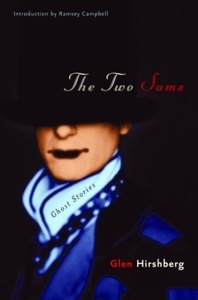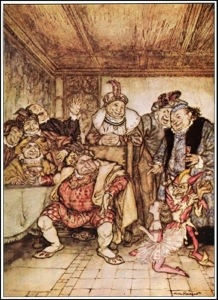I drew the Queen of Hearts this week for my Deal Me In short story reading challenge. Back when I was planning my roster for this year (and prior years) the name of author Mary Gaitskill kept coming up as a recommendation. When I saw that one of her stories was included in my copy of The Best American Short Stories of 2012, I quickly reserved a place for it on my list.
“The Other Place” is, frankly, a disturbing story to read. It deals with a man who, in outward appearance at least, appears to be “just a normal guy.” One like many men these days, who are troubled about their children’s fondness for the violent video games, movies, or music of today’s world. The story takes on a chilling nature, however, when we learn that the narrator himself has “a past” which included violent fantasies – fantasies that he came within a hair’s breadth of acting upon.
The “other place” in this story’s title refers to that realm where the narrator’s darker thoughts could take on a reality of their own. In his past, certain situations would arise – or be sought out by the narrator – where “The Other Place” was readily accessible. Once, for example, while “following” female students at a nearby college he says, “I’d feel the other place running against the membrane of the world, almost touching it.” Creepy.
This story makes one think – or realize – that there is a thin line between violent thought or fantasy and violent action. How many people are there “out there” like this story’s narrator? People who just barely hold it together in their lives? It’s an unsettling question to ponder, but through it all, I found Gaitskill’s treatment of this difficult subject matter quite masterful, and I look forward to reading more of her work in the future.
This story may be read online at http://www.newyorker.com/fiction/features/2011/02/14/110214fi_fiction_gaitskill?currentPage=all
Or, listen to this story (read by Jennifer Egan) at http://www.newyorker.com/online/blogs/books/2014/03/fiction-podcast-jennifer-egan-reads-mary-gaitskill.html
Or, better yet, watch the author herself reading it at an appearance at Rutgers University: http://vimeo.com/66047286
I also found an interview with the author in the New Yorker to be very interesting: http://www.newyorker.com/online/blogs/books/2011/02/mary-gaitskill-the-other-place.html
I’ll share one quotation here:
“It’s one thing to entertain an idea, even to feel it physically, quite another to act on it. Our culture encourages people to entertain these feelings; I realize that this is old-fashioned of me, but I sometimes consider that a sign of decadence, playing with something that shouldn’t be played with. At the same time, it is an attempt to sort something out, to grapple with the reality of these feelings. In this country, apparently normal family men joined lynch mobs, and normal communities went along with it; we all know what happened in Rwanda and Bosnia. Of course, we want to understand this, or to cope with it somehow, because it’s frightening.”
Gaitskill’s “contributors note” in the back of the Best Short Stories of 2012 collection:
“I wrote “The Other Place” for a very simple reason. I was afraid. I was living alone in a flimsy fishbowl house on a college campus that, as far as I was concerned, was a pervert magnet. The climactic scene of the story came to me before I had any intention of writing a story; I think it appeared in my mind because I wanted to imagine killer and victim coming right up to the crucial moment and the both walking away unharmed. At some point after that, the story formed.”
What about you? Have you read anything by Mary Gaitskill? Any works you’d recommend I follow up this reading with?
(Below – from Wikipedia – author Mary Gaitskill)























